This San Sebastian Cheesecake or basque burnt cheesecake breaks all the rules of baked cheesecake. It's deliciously perfect in all its imperfections!
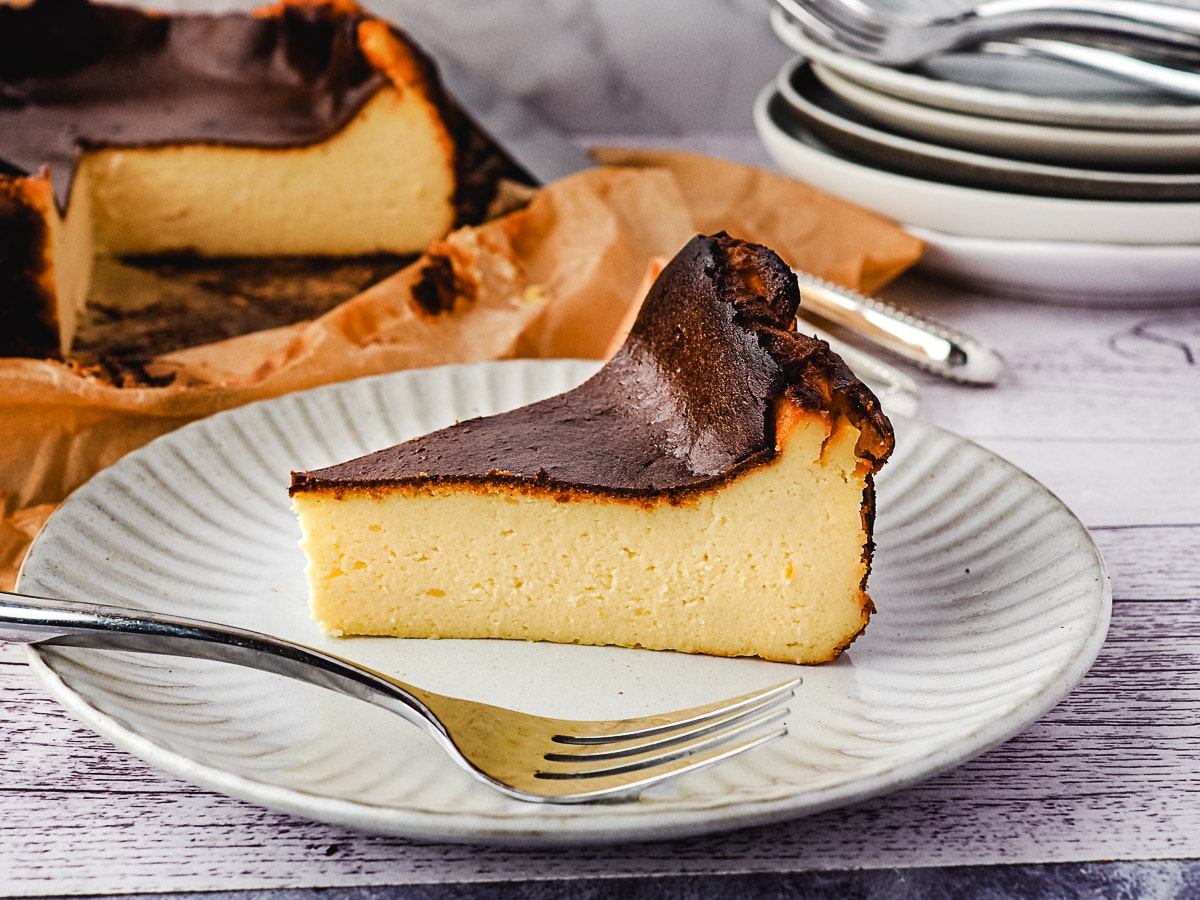
Jump to:
San Sebastian cheesecake is the black sheep of the baked cheesecake family. Unlike regular baked cheesecake, with its smooth unblemished texture and temperamental nature, basque burnt cheesecake is none of these things.
Its imperfections are what make it perfect. It's dark and caramelized. It rises up up up and then falls to form a sunken, cavernous creator. It's dark and it's gnarly and it's wrinkly and it's cracked and above all else it's delicious. If you are expecting a traditional baked cheesecake this is not it. Best appreciated in all its imperfect glory.
Love burnt cheesecake but looking for a smaller version? Why not try making my mini burnt cheesecakes. With everything you love about Basque cheesecake but in super cute individual serves.
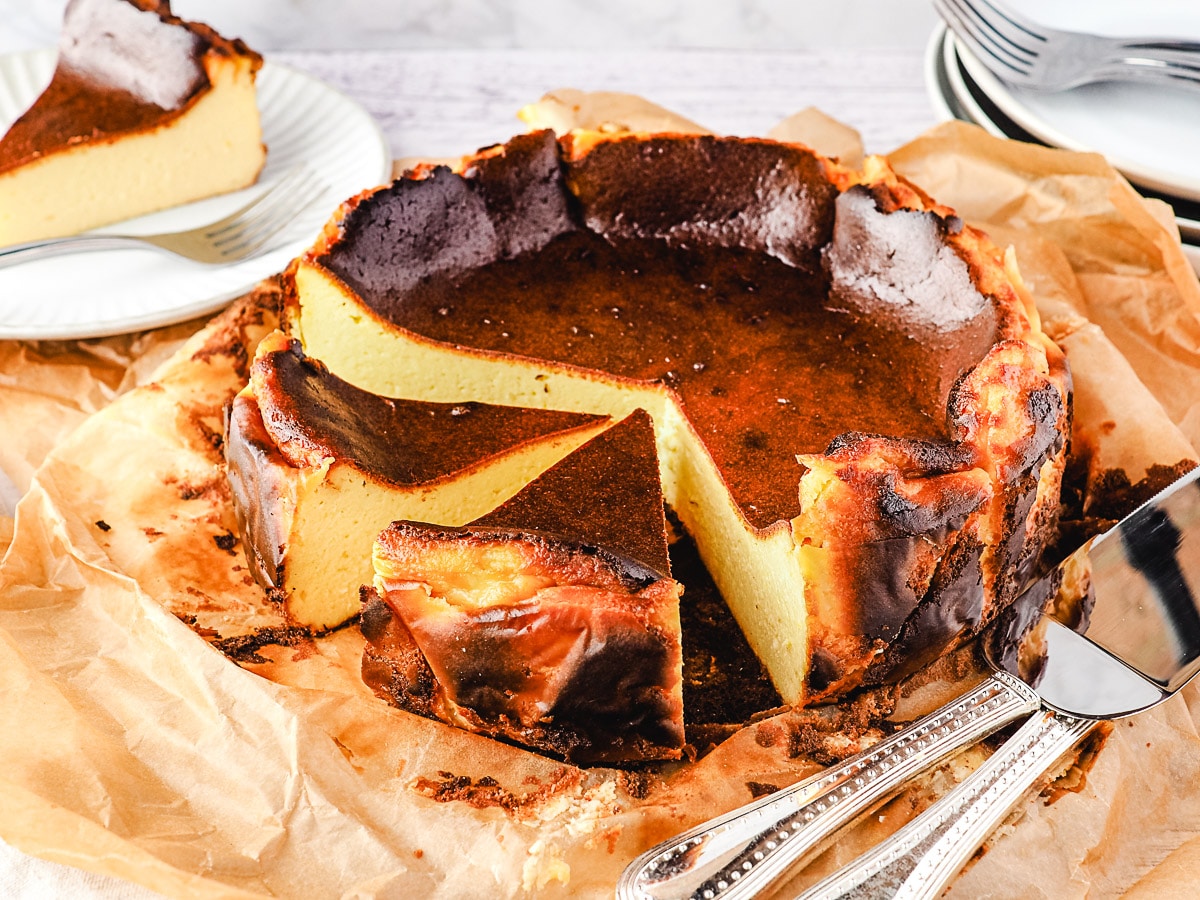
Recipe tips and frequently asked questions
Why is it called San Sebastian cheesecake?
San Sebastian cheesecake is known by many different names, including La Vina cheesecake, Basque cheesecake, burnt cheesecake or even Spanish cheesecake. A chef invented it at La Viña, a local pintxos bar in beautiful San Sebastian in the Basque region in Spain, hence the name.
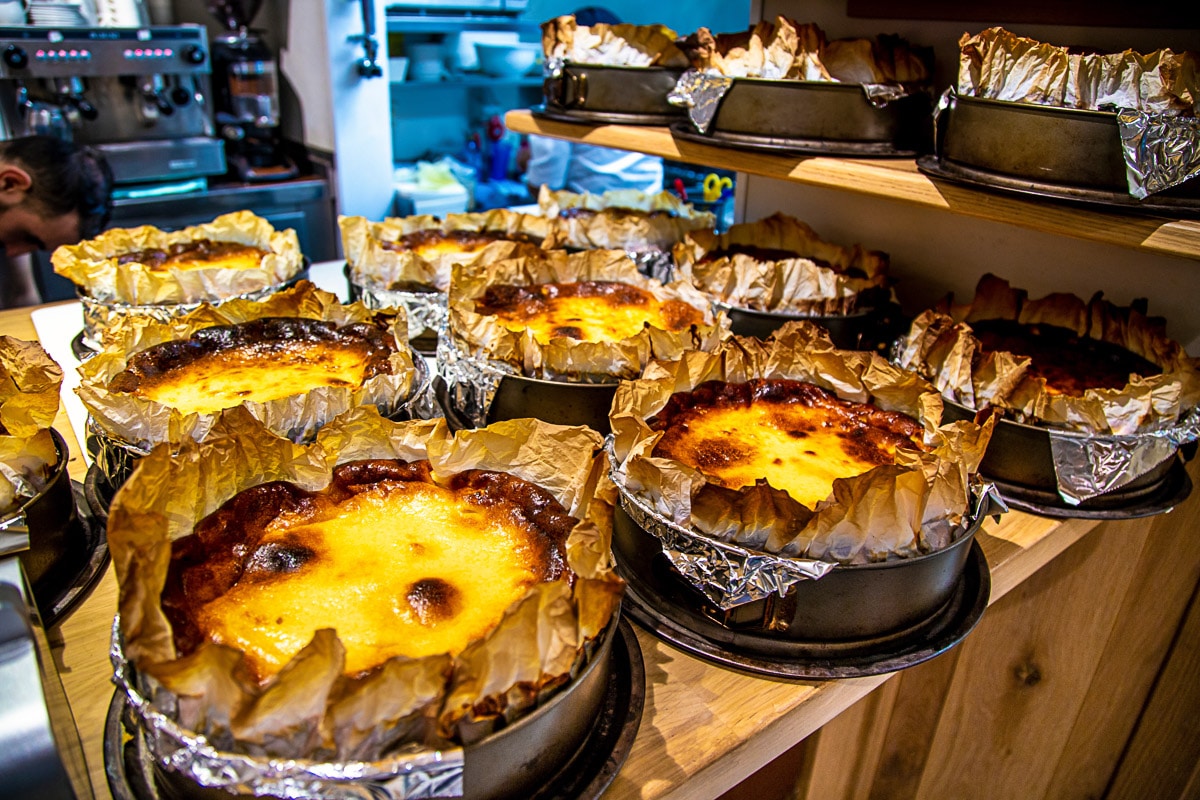
What does Basque cheesecake taste like?
It's unlike any other cheesecake you've tasted before. Some have described it as a cross between a souffle, a baked custard and a baked cheesecake. The light, creamy center contrasts with the deeply caramelized edges that form a natural crust and offset the sweetness of the filling beautifully.
What's the difference between San Sebastian cheesecake vs New York Cheesecake vs Japanese cheesecake?
San Sebastian cheesecake is a dark, caramelized color, with rough edges, sunken center, light texture, often cracked, no crust, and baked without a water bath.
New York Cheesecake is lightly colored, smooth, creamy, rich, dense, prone to cracking, has a reputation for being temperamental, made with or without a crust, and baked in a water bath.
Japanse cheesecake is very lightly colored, smooth, light, airy, 'souffle style', prone to cracking, has a reputation for being temperamental, has no crust and is baked in a water bath.
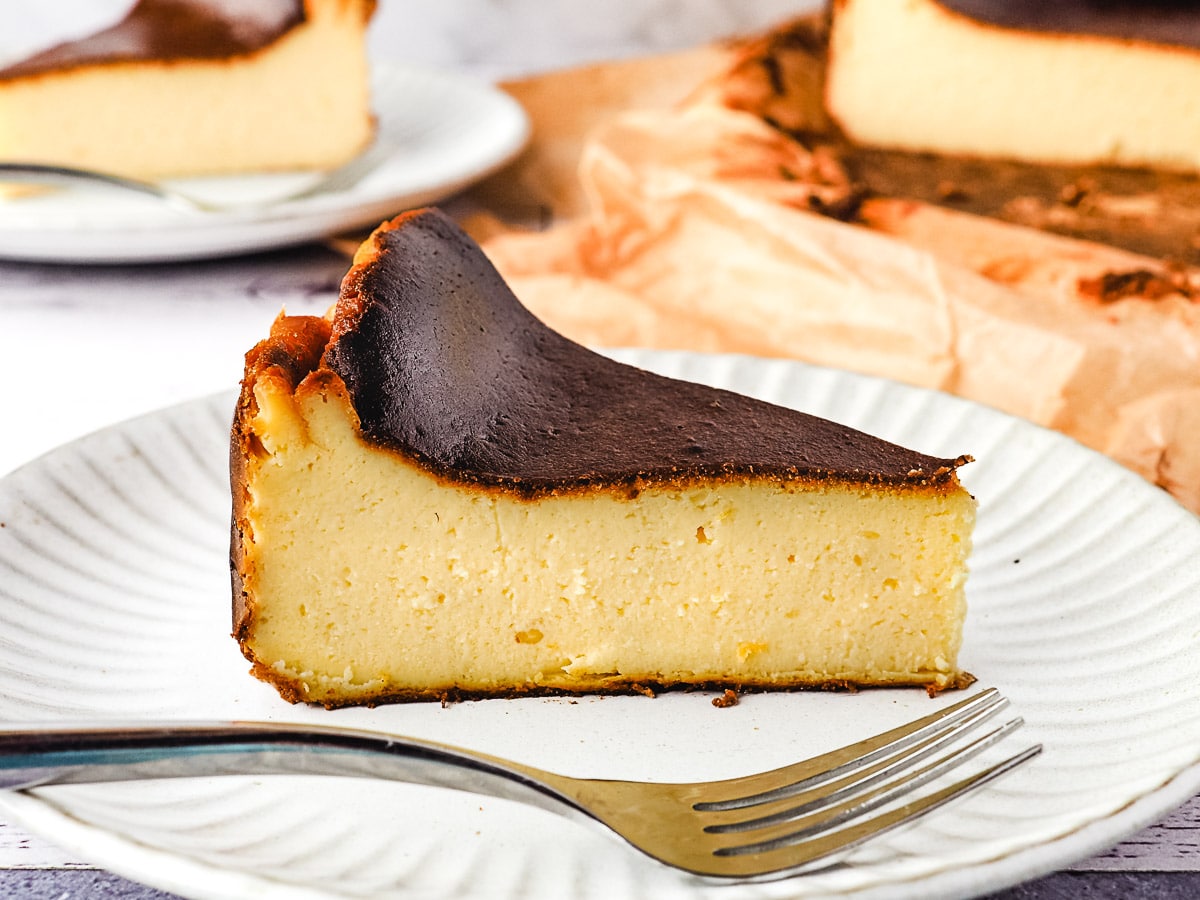
Why is my cheesecake not burnt?
A couple of reasons. It was not baked for long enough, or in a hot enough oven. The amount of burntness is really a personal preference, from a light caramel color to a deep brown, verging on black color. I like to bake mine until it reaches a beautiful dark brown caramelized color on the top and sides as I find this gives the best flavor.
Can I add other flavors to this?
You sure can. Why not try one of these fabulous flavor additions:
- Add a tablespoon of alcohol such as rum or bourbon
- Replace the lemon juice and zest with blood orange juice and zest and add a tablespoon of orange liqueur such as Cointreau
- Replace the tapioca starch with ¾ cup plain malted powder
- Replace the vanilla with ½ tablespoon espresso powder dissolved in ½ tablespoon boiling water and add 1 tablespoon Kahlua.
Ingredients
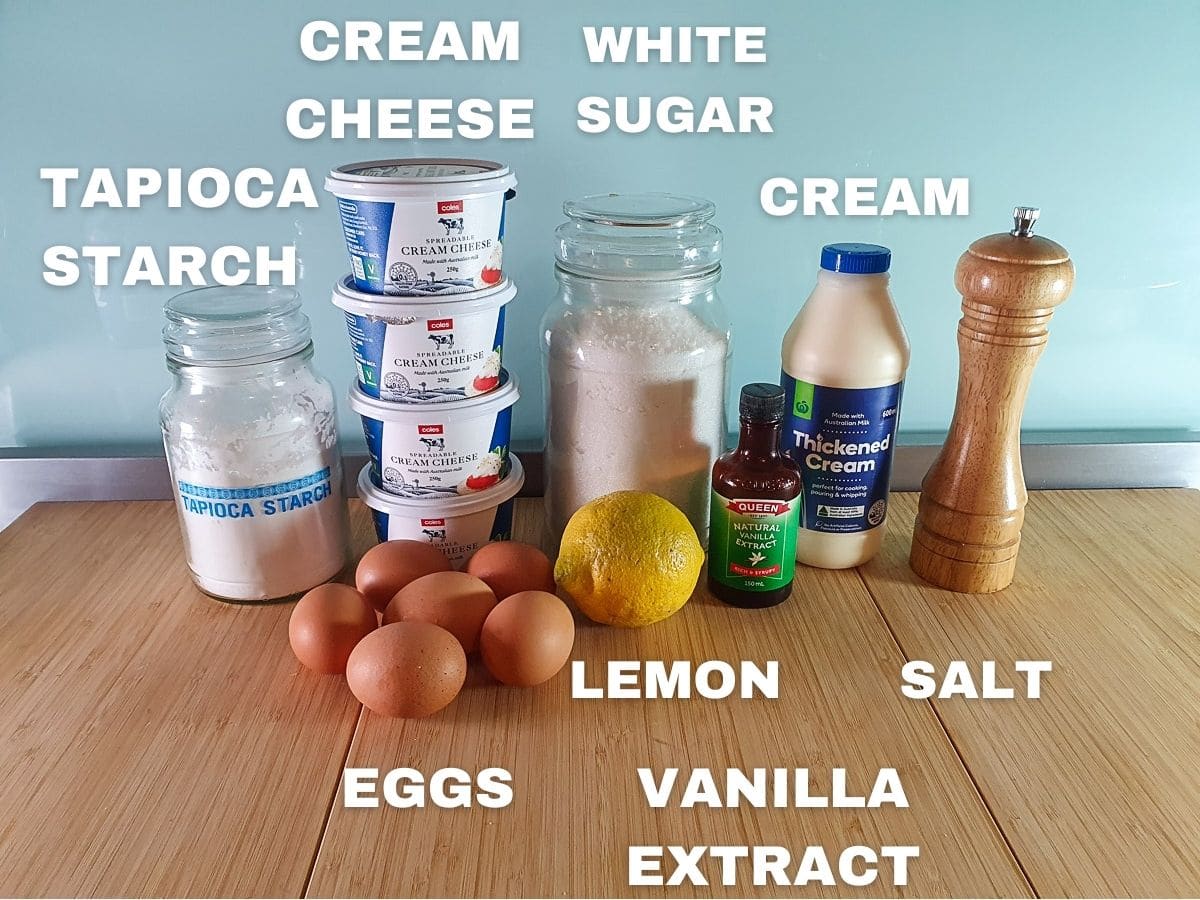
Cream cheese: full fat cream cheese is best for this recipe for that classic creamy cheesecake taste. If you use light cream cheese it may not set.
Cream: I use thickened cream which has a fat content of about 34%. You could also use heavy cream or heavy whipping cream which is similar.
Eggs: I use large eggs in this recipe, approx. 2oz (55 gms) each with shells before cracking.
White sugar: I've kept things clean and simple with white sugar. But you could absolutely experiment with other sugars such as turbinado (raw) sugar or brown sugar. Just make sure they are full dissolved in the cheesecake batter.
Tapioca starch: a little tapioca starch instead of all-purpose flour helps set this cheesecake and keeps it a gluten-free cheesecake. If you can't get tapioca starch you can use arrowroot powder or cornflour in the same volume.
Optional extras:
The following ingredients are not in the original La Vina cheesecake but I think they really enhance the flavor. If you happen to have access to some Amazing fresh local dairy and eggs you may get away with making it without them. But my recipe testers all loved it with them!
Vanilla extract: sometimes also called vanilla essence, depending on where you live. You can use either, or imitation vanilla essence, depending on your preference and budget.
Lemons: a dash of lemon juice and lemon zest helps balance the sweetness of the cheesecake. You could try this with other citruses such as lime or orange.
How to make San Sebastian cheesecake
See the full recipe card at the end of the post for ingredient amounts and instructions.
Line the spring form tin with two offset pieces of baking paper, leaving at least two inches (5cm) overhang on each side to allow the cheesecake to rise. Add a little butter to the bottom to help the paper stick in place.
Make sure you have room in your oven for the high baking paper edges. You may need to rearrange or remove some oven racks. It's easier to do this before you preheat your oven.
Preheat your oven to 440°F (225°C/205°C fan-forced). Do not skip preheating your oven, it needs to be nice and hot to help the cheesecake rise and 'burn' the outside.
Hot tip: Make sure your cream cheese is at room temperature. This can take anywhere from thirty minutes to one hour depending on where you live. If your cream cheese is too cold it won't mix in properly and is one of the main causes of lumpy or grainy cheesecake.
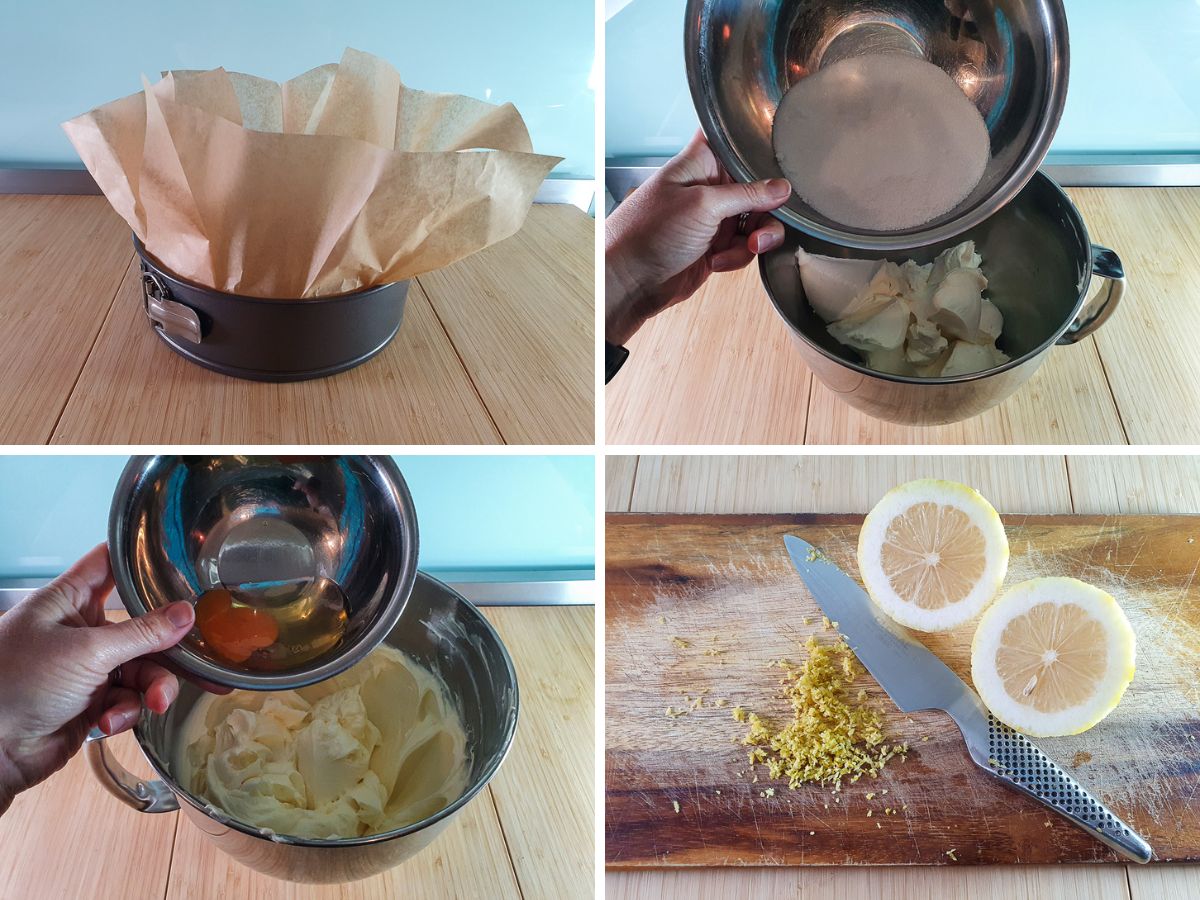
Zest and juice the lemon. Finely chop the lemon zest. Beat the cream cheese and sugar together on low until smooth and the sugar is dissolved. It's important to make sure the sugar is fully dissolved at this stage or your risk the final texture being grainy. Add the eggs one at a time, mixing well between adding each egg.
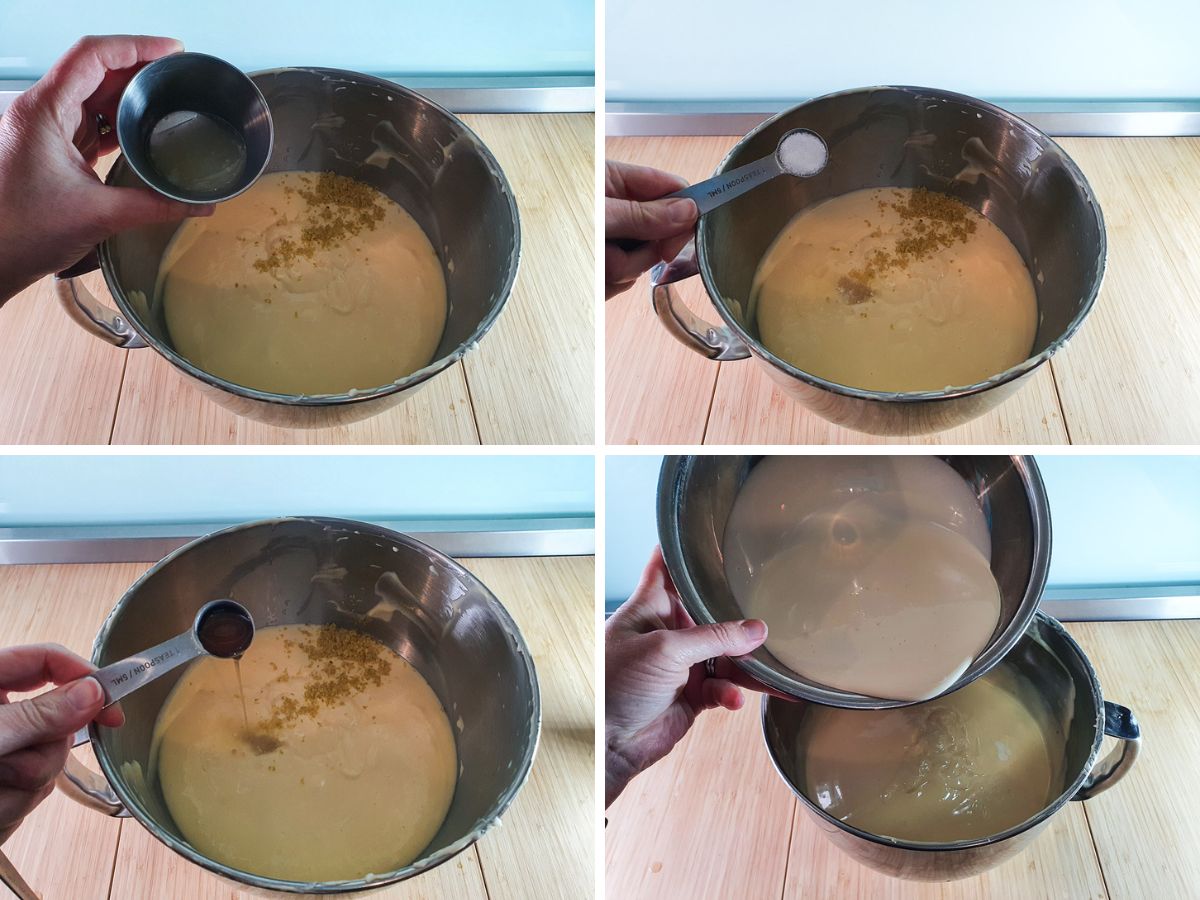
If using a stand mixer make sure you scrap the edges every now and then to mix in the blind spots. Add the cream, salt, vanilla, and lemon juice and beat until smooth. Sift in the tapioca starch and beat until very smooth.
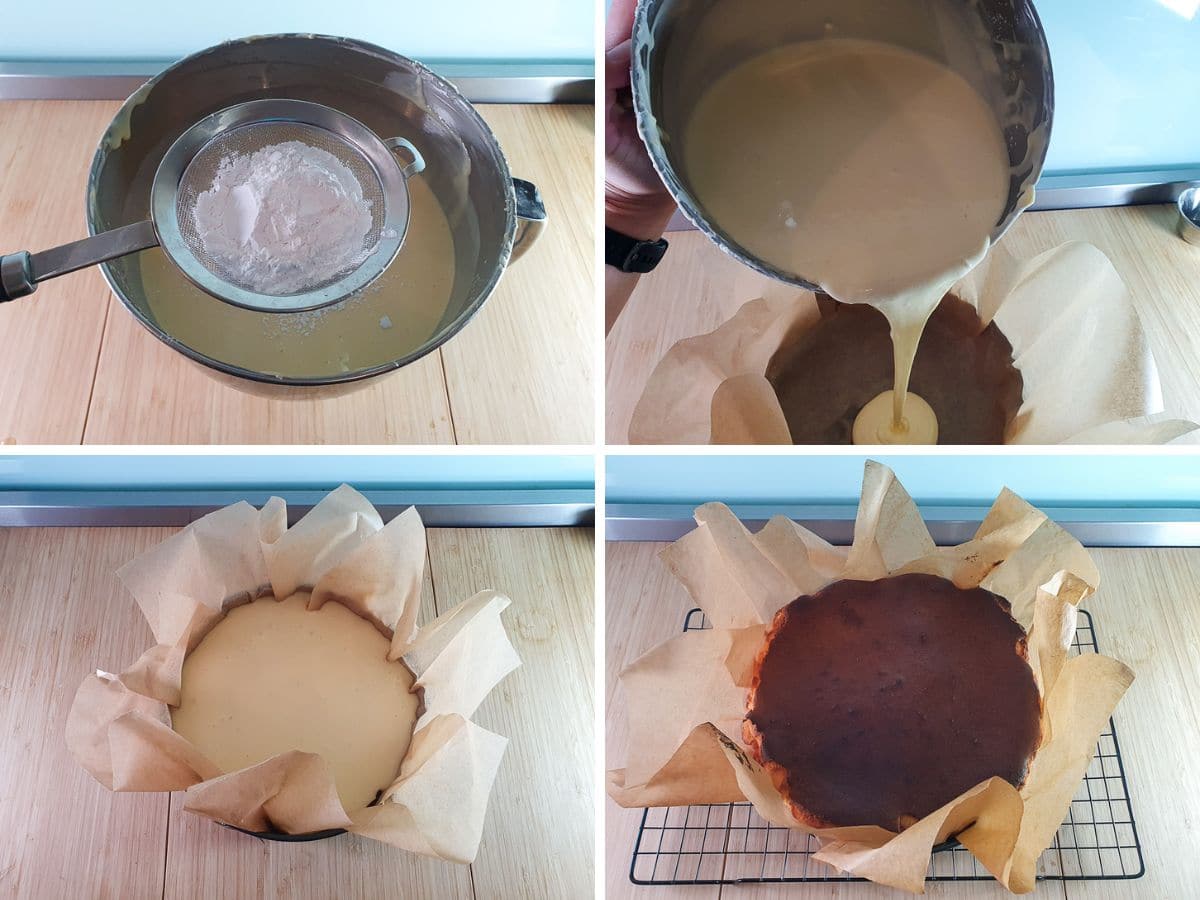
Pour into lined the lined spring form tin. Bake for approx. one hour and twenty minutes or until cheesecake is deeply dark brown on the top and sides. The cheesecake should be jiggling in the center but should have very little if any jiggle around the edges.
Remove from oven and allow cool completely to room temperature before removing from the spring form pan and serving.
Hot tip: the texture of this cheesecake once baked changes quite a bit with temperature. At room temperature after baking it will be lighter and fluffier. Once refrigerated it will firm up and be edging towards more of the texture of a regular baked cheesecake. Either way it's delicious!
How to serve
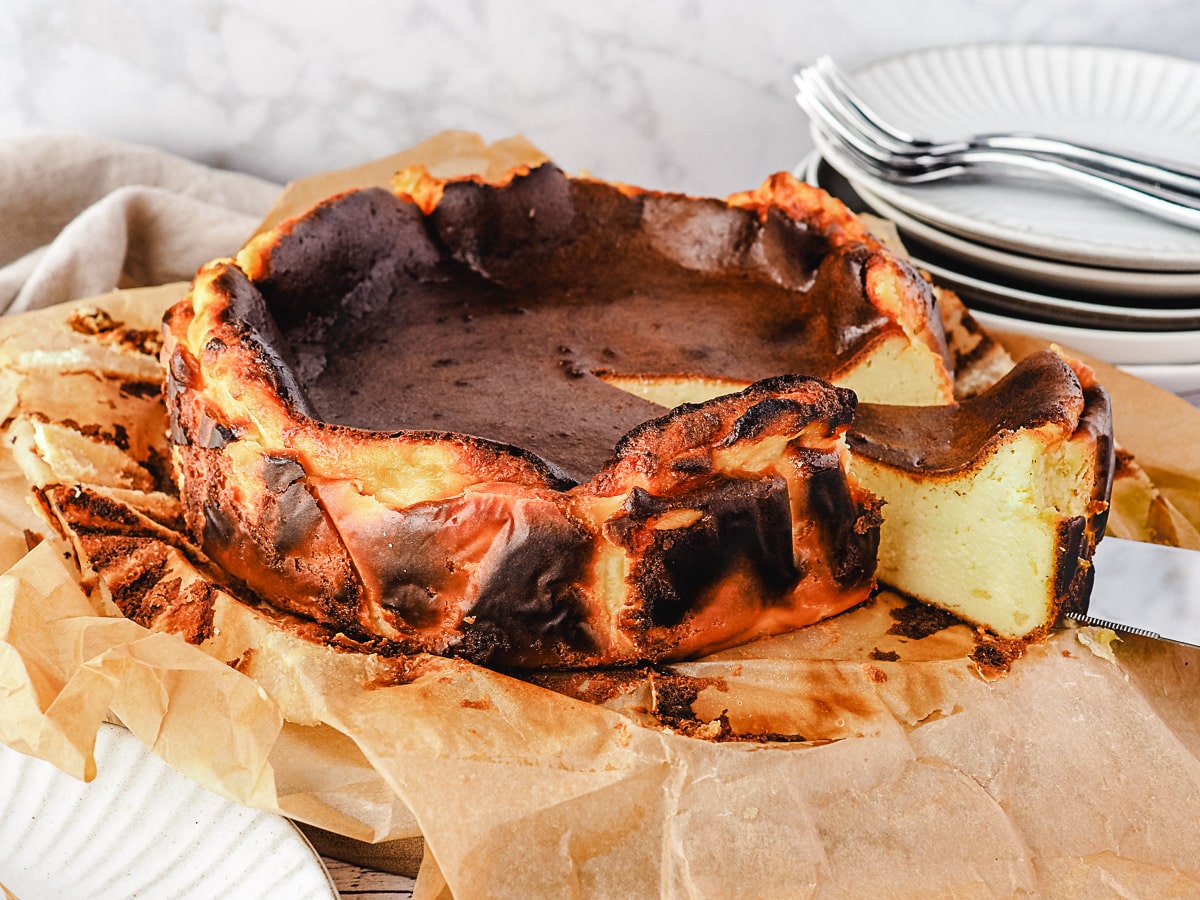
To serve this burnt cheesecake pop it onto a plate, carefully peel back the baking paper, slice and enjoy! Make sure it's cooled to room temperature first or it will collapse into a delicious mess.
Fabulous on its own, La Vina style with a shot of port wine poured over the top, or with one of my fresh fruit coulis or compotes such as passion fruit, strawberry or raspberry. Delicious!
How to store
This Spanish cheesecake will store in the fridge for up to five days. But I very much doubt it will last that long!
I'm still working on freezer testing these cheesecakes and will update the recipe when I have more info!
Have you made this recipe? Tell me how it went in the comments below and tag me on instagram so I can see your delicious creations! @keep_calm_and_eat_icecream
Looking for more yummy dessert recipes?
Why not try making
- Mini Burnt Cheesecakes (mini basque cheesecakes)
- Philadelphia No Bake Cheesecake
- No Bake Mini Cheesecakes
- Biscoff Cheesecake
Follow me on Facebook or Pinterest for many more delicious recipes.
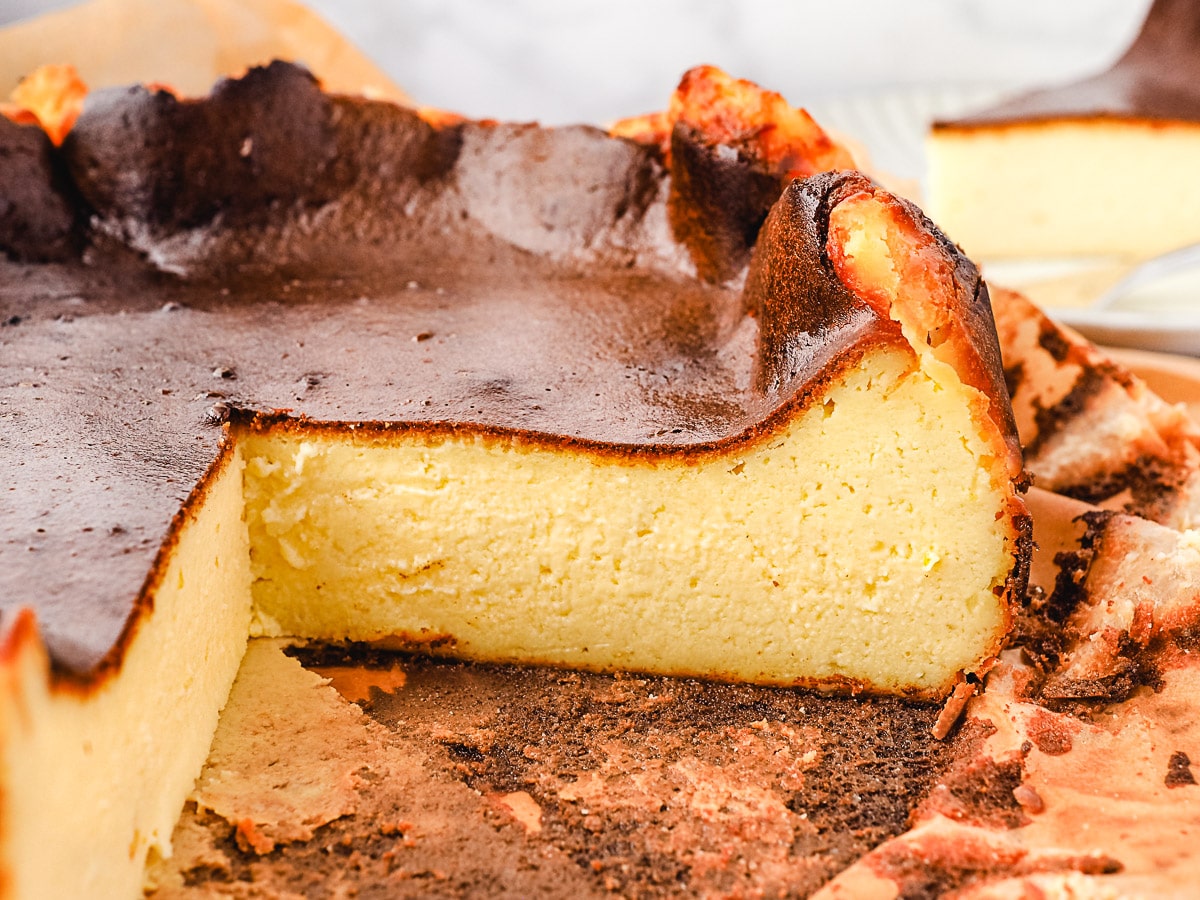
📋 Recipe
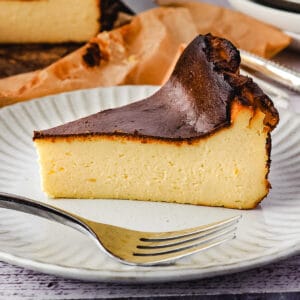
San Sebastian Cheesecake
Equipment
- 9 inch springform cake tin
- Electric hand beaters or stand mixer
Ingredients
- extra butter for greasing
- 4 x 8 ounce (900gms total) full fat cream cheese
- 1 & ½ cups (330gms) white sugar
- 6 large eggs (approx. 2oz/55gms each)
- 2 cups (500mls) thickened cream
- 2 teaspoons vanilla
- zest from one medium lemon
- 4 teaspoons (20mls) lemon juice
- 1 teaspoon salt
- ¼ cup (40gms) tapioca starch or corn starch
Instructions
- Line the spring form tin with two offset pieces of baking paper, leaving at least good two inches (5cm) overhang on each side to allow the cheesecake to rise. Add a little butter to the bottom to help the paper stick in place.
- Make sure you have room in your oven for the high baking paper edges. You may need to rearrange or remove some oven racks. It's easier to this before you preheat your oven.
- Pre-heat your oven to 435°F (225°C/205°C fan-forced) for at least ten minutes.
- Zest and juice the lemon.
- Add the cream cheese to a bowl or stand mixer and mix briefly to soften. Add the sugar in a couple of batches, mixing between each addition until it's all added. Mix on low until the sugar has dissolved.
- Add the eggs one at a time, mixing well between each addition. If using a stand mixer make sure you scrape the edges of the bowl to ensure any blind spots are mixed in.
- Add the cream, lemon juice and zest, vanilla and salt and mix until very smooth.
- Sift in the tapioca starch and mix in gently until the batter is very smooth.
- Pour into the batter into the lined cake tin and bake for one hour and twenty minutes, or until top and edges of the cheesecake are a deep brown color. The center will still be jiggle but they should be little to no jiggle at the edges.
- Allow to cool completely to room temperature before serving.
- Serve at room temperature or a light, airy cheesecake or chill for a firmer, denser cheescake. Fabulious on their own or will one of my fruit compotes, curds or coulis. Delicious!
Notes
Nutrition
Nutritional Disclaimer
Nutritional information is an estimate based on an online database. The nutritional content of ingredients may vary by brand. If you require accurate nutritional information, you should calculate this based on the specific brands and products you are using.
Join the community!
Like Keep Calm and Eat Ice Cream on Facebook for more great recipes
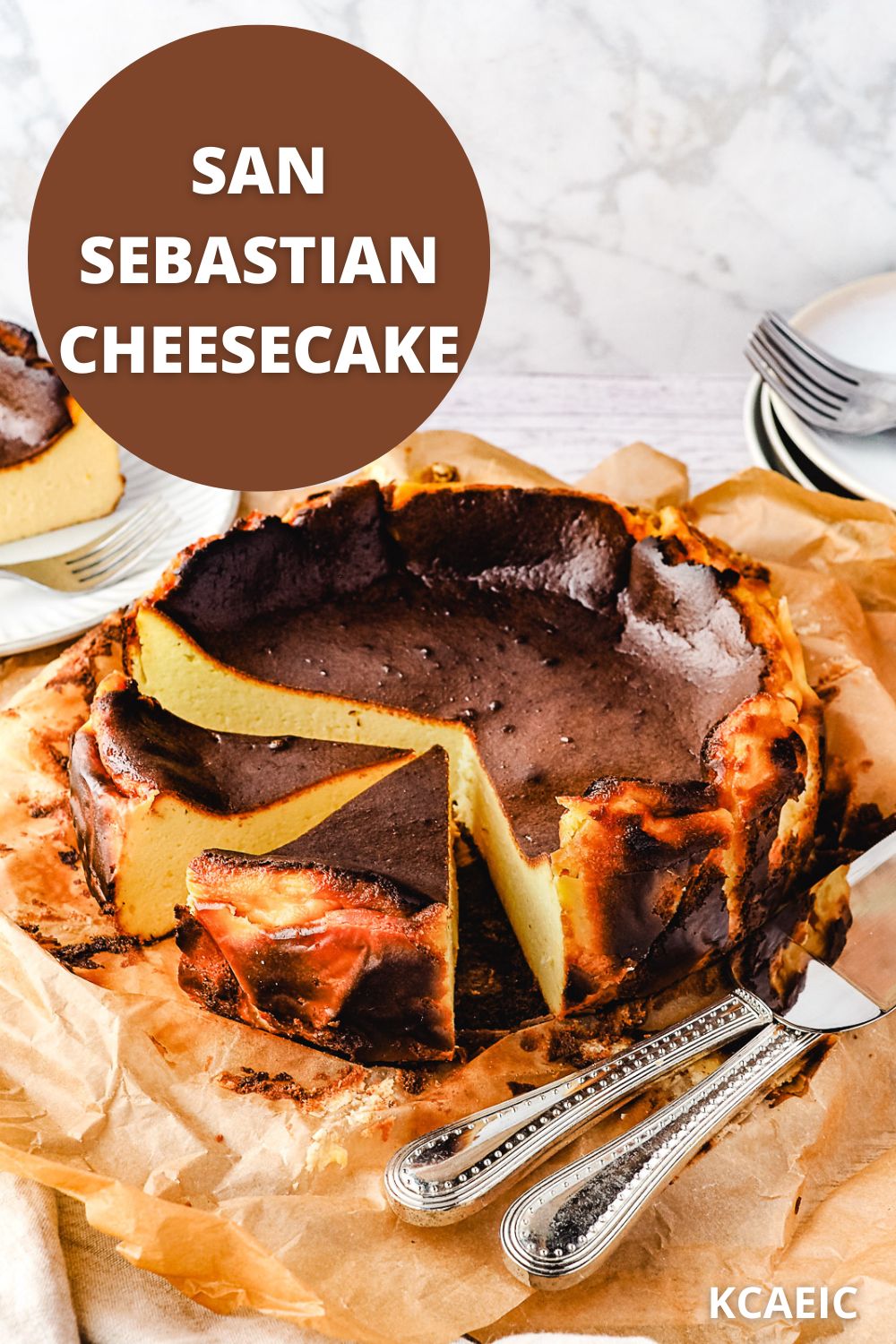
Pin it for later!
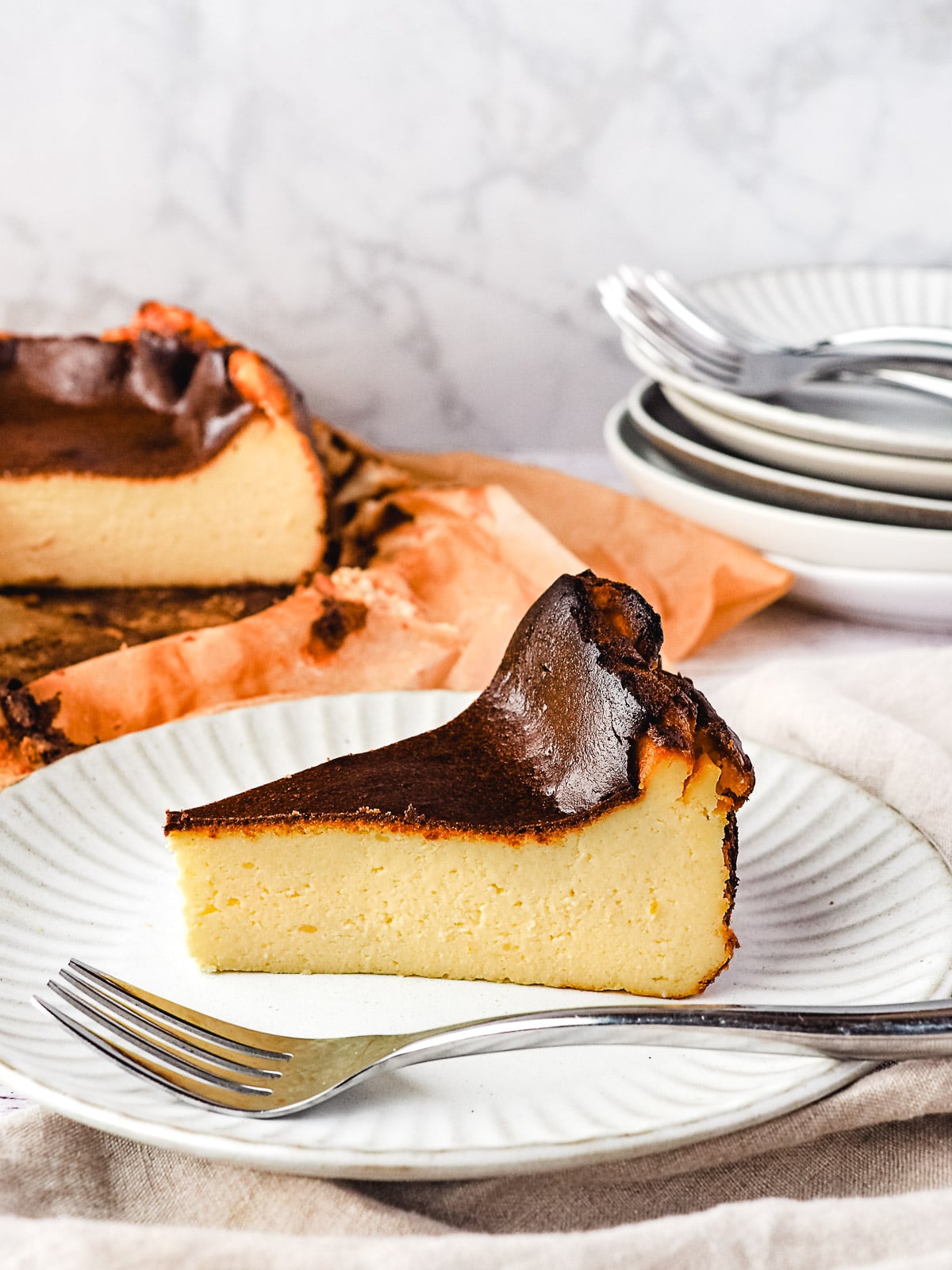


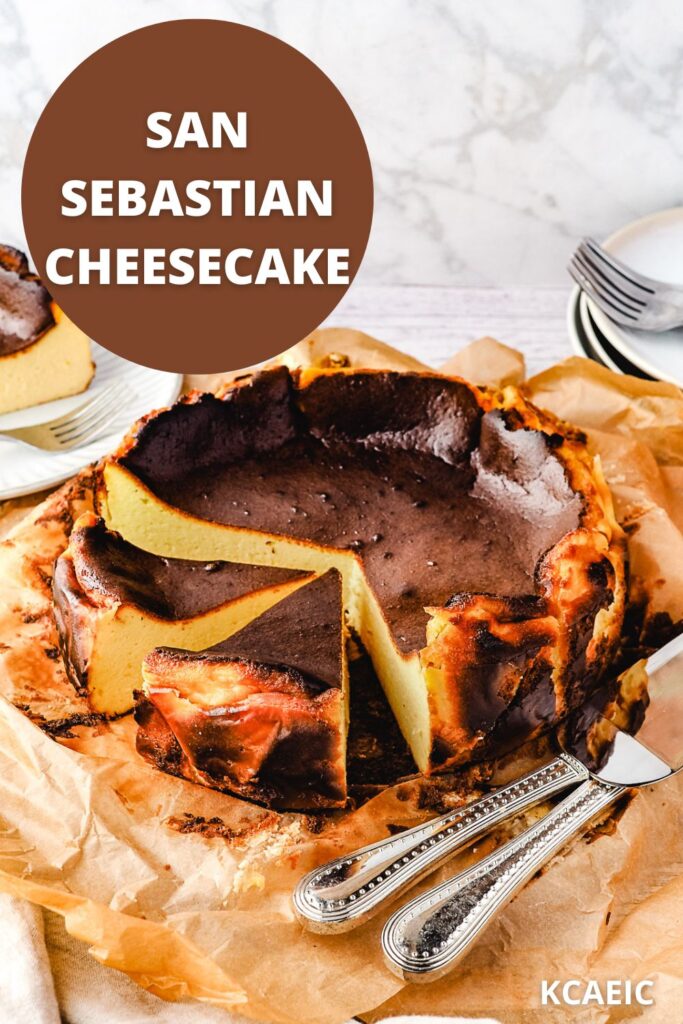
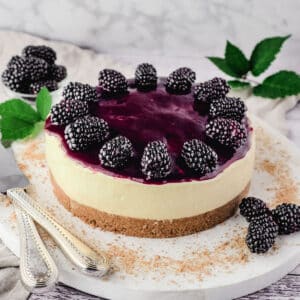
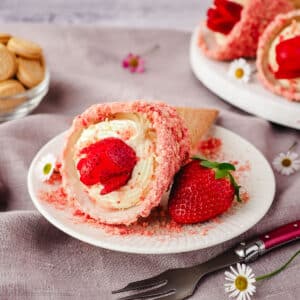

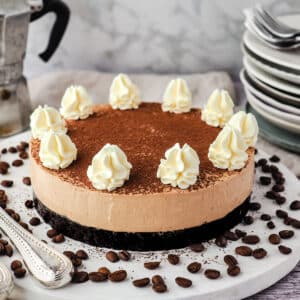
Katie
Absolutely delicious!
Sarah Brooks
Thanks Katie! I'm so glad you enjoyed it 🙂